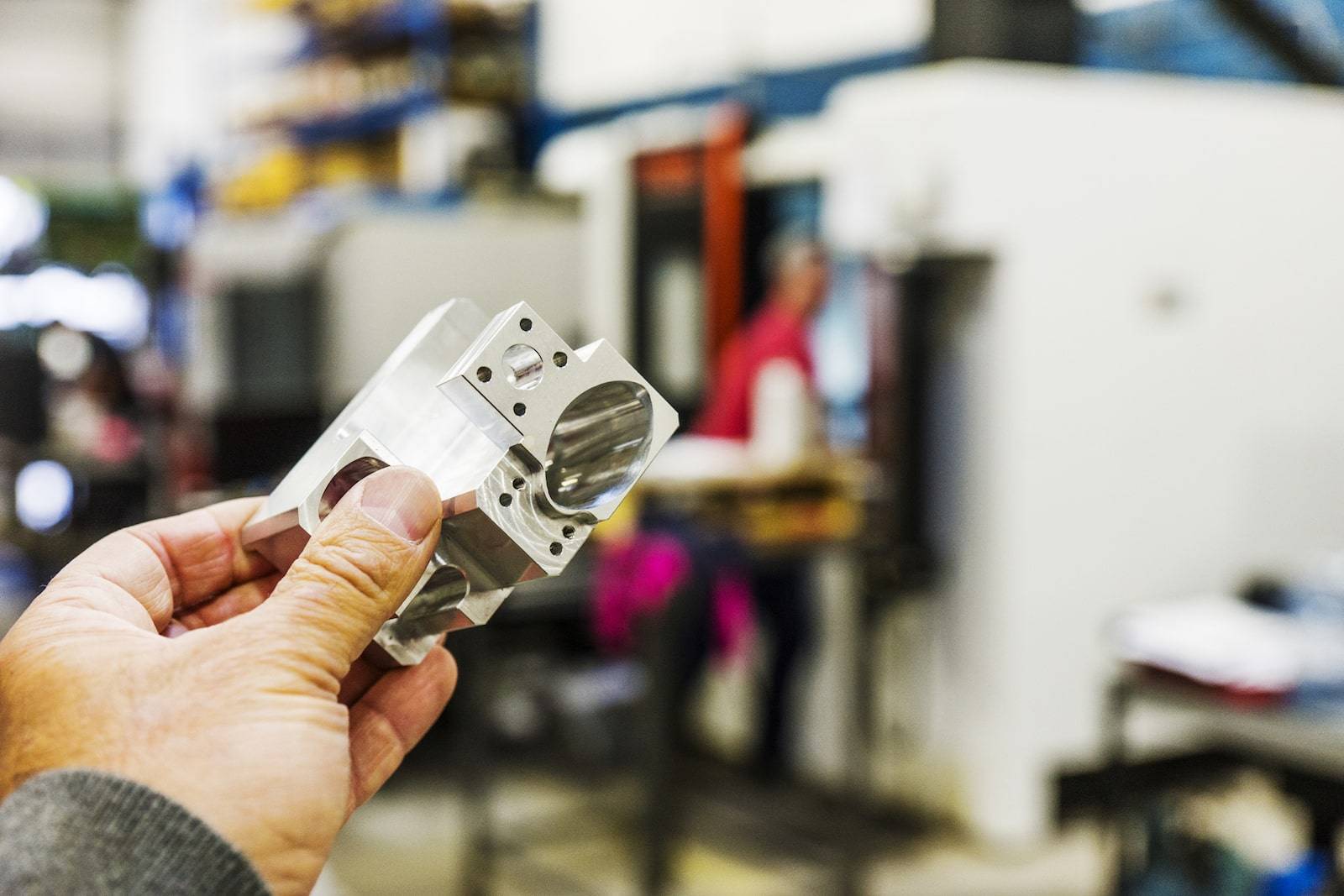Our high-heat thermal deburring solves the problem of deburring parts with recessed or impossible-to-reach areas, in addition to burning off burrs on external surfaces.
Thermal deburring effectively cleans boring remnants and removes trapped machining particulates. Meanwhile, thermal deflashing is proficient in eliminating flash from various materials, including cast aluminum, zinc, steel, stainless steel, brass, and other metals, whether ferrous or non-ferrous.
The deburring happens in a brief burst of heat, reaching temperatures of 5430°F (3000°C) for about 20 milliseconds. That’s enough time for deburring without affecting part dimensions or metallurgy.

Thermal Deburring Chart |
|||||
| Material | For Best Results With Flag Style Burrs | Advantages/Disadvantage to Thermal Deburring | Pre-Thermal Deburr Processing | Post Thermal Cleaning | Optional Post Thermal Processing |
| Aluminum | Burr/slag thickness should not exceed 0.75mm | Effective removal of burrs, parts can returned to very clean, fixture marks are more apparent | Degrease, pre-thermal deburring | Acid wash and Ultrasonic clean | Blasting, Sanding, Anodize, Chromate |
| Brass | Burr/slag thickness should not exceed 0.75mm | Effective removal of burrs but can result in stains on surfaces but can be cleaned well | Degrease, pre-thermal deburring | Light acid soap wash | Blasting, Tumbling |
| Carbon Steel | Burr/slag thickness should not exceed 1mm | Effective removal of burrs, some oxide stains may remain | Degrease | De-Ox acid wash | Blasting |
| Cast Iron | Burr/slag thickness should not exceed 1mm | Effective removal of burrs, some oxide stains may remain | Degrease | De-Ox acid wash | Blasting |
| Copper | Burr/slag thickness should not exceed 0.75mm | Effective removal of burrs but can result in stains on surfaces | Degrease | N/A | Blasting, Tumbling |
| Glass Filled Nylon | Burr/slag thickness should not exceed 1mm | Effective removal of burrs | Degrease | N/A | Blasting, Hand Deburring |
| Stainless Steel | Burr/slag thickness should not exceed 1mm | Effective removal of burrs, parts look somewhat dirty post-cleaning | Degrease, pre-thermal deburring | Acid wash and ultrasonic clean | Blasting, Electropolish, Passivation |
| Titanium | Burr/slag thickness should not exceed 0.75mm | Burr attachment point burns back but not fully removed, can result in stains on surfaces | Degrease | Ultrasonic clean | Blasting, Passivation |
| Zamak | Burr/slag thickness should not exceed 0.75mm | Effective removal of burrs but can result in a chalky dull appearance | Degrease | Light detergent wash | Blasting |
| Zinc | Burr/slag thickness should not exceed 0.75mm | Effective removal of burrs but can result in a chalky dull appearance | Degrease | Light detergent wash | Blasting, Tumbling |


Thermal deburring and cryogenic deflashing are opposite sides of the deburring spectrum. Thermal deburring uses a high burst of heat for milliseconds to burn away burrs. Cryogenic deflashing uses sub-zero temperatures combined with a tumbling process to deburr and deflash parts.
Temperatures may reach 5430°F (3000°C) in a thermal deburring chamber, lasting milliseconds.
No. Thermal deburring does not alter the surface or geometry of the parts or thread forms.
Thermal deburring offers several benefits including:
TEM in context to Thermal Deburring stands for Thermal Energy Machining
Thermal deburring is conducive for all types of metal, except for magnesium.
We look beyond today to increase efficiency and serve your business.

Defense contractors rely on our anodizing, laser-marking, descaling, and other services to meet military specifications.

We offer a range of finishing services for aerospace components and maintain NADCAP certification

Our suite of capabilities delivers precise results producing the highest quality finishes.

CNC manufacturers rely on our services to complete final finishing.

Our precision capabilities handle high-volume jobs for automotive OEMs.

Our deburring, deflashing, and other services optimize the operating life of hydraulic equipment.

Our finishing services meet critical tolerances for metal and plastic parts made for consumer electronics.

Our services for finishing water-system components include cryogenic deflashing, passivation, and laser marking.










End-to-End
We eliminate the need for your parts to go elsewhere.